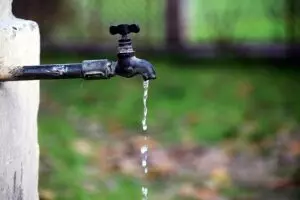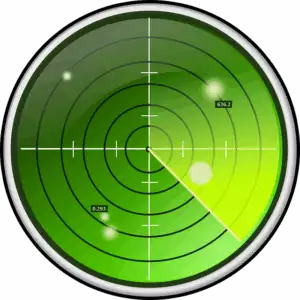Mastering Emergency Leak Detection: Tools, Signs, & Prevention Strategies
Leak detection is a critical process for commercial and industrial settings, employing advanced tech…….

Leak detection is a critical process for commercial and industrial settings, employing advanced technologies like ultrasonic sensors, thermal imaging, and RF tracking to quickly identify and mitigate water and gas leaks. It's crucial for immediate threat assessment, preventing structural damage, conserving water resources, and minimizing disruption in critical infrastructure like hospitals and data centers. Modern innovations such as smart sensors, AI, and real-time monitoring systems enable rapid response, while regular maintenance and proactive measures help prevent leaks. Case studies show successful implementations in industries, leading to reduced repair times and operational disruptions. The future of leak detection includes smarter, IoT-integrated systems powered by AI for efficient water conservation in smart cities.
In today’s world, immediate action during emergency leak situations is paramount to prevent substantial damage and costly repairs. This comprehensive guide explores crucial aspects of leak detection, from understanding the basics to advanced technologies. We delve into various types of leaks, highlighting the importance of rapid response and common signs indicating an emergency. Learn about cutting-edge tools, step-by-step actions during crises, prevention strategies, and successful case studies. Discover future trends transforming leak detection systems for enhanced efficiency.
Understanding Emergency Leak Detection: A Basic Overview

Leak detection is a critical process designed to identify and mitigate water leaks promptly, minimizing damage and waste. It’s particularly crucial in commercial and industrial settings where large-scale leaks can cause significant financial losses and disruptions. Modern leak detection systems employ advanced technologies like ultrasonic sensors, thermal imaging cameras, and radio frequency (RF) tracking to pinpoint the exact location of a leak within a complex network of pipes and infrastructure.
These systems work by continuously monitoring water flow and pressure, detecting unusual patterns that indicate a potential leak. When an anomaly is detected, specialized equipment and trained personnel are dispatched to verify and assess the situation. This rapid response is key to minimizing water loss, preventing structural damage, and ensuring business continuity. Effective leak detection not only saves money but also contributes to sustainability by conserving precious water resources.
Types of Leaks That Require Immediate Attention

Leak detection is a critical process, especially when it comes to addressing immediate threats. Some types of leaks demand urgent attention due to their potential severity and impact. For instance, gas leaks are an extreme concern as they can lead to explosions and pose significant risks to life and property. Prompt action is required to isolate the source and ensure safety.
Similarly, water leaks in sensitive areas like hospitals, data centers, or commercial buildings should never be overlooked. These locations rely on uninterrupted services, and even a minor leak can disrupt operations and cause substantial damage over time. Regular maintenance and advanced leak detection systems are crucial to identify and fix such issues swiftly, minimizing potential losses.
The Importance of Rapid Response in Leak Situations

In emergency leak situations, swift action can make a significant difference in minimizing damage and preventing further complications. The speed of response is critical, as water leaks have the potential to cause substantial harm to both property and belongings within a short period. Rapid detection and intervention allow for quicker shut-off of water supply lines, limiting the flow of water and reducing the extent of water damage.
Effective leak detection systems play a pivotal role in facilitating rapid response. These systems employ advanced technologies such as smart sensors and data analytics to monitor water usage patterns, identify anomalies, and pinpoint the source of leaks promptly. By automating the initial detection process, buildings and homes can benefit from immediate alerts, enabling residents or facility managers to take prompt action, thus ensuring minimal disruption and repair costs.
Common Signs Indicating an Emergency Leak

Leak detection is a critical aspect of maintaining any water or fluid system, and recognizing common signs can help in addressing potential issues promptly. Some obvious indicators that an emergency leak may be present include persistent dripping or puddling around fixtures, walls, or floors. Even small drips over an extended period can signify a larger problem beneath the surface.
Other telltale signs include sudden, unexplained spikes in water bills, mysterious noises coming from pipes during off-peak hours, or the scent of mold and mildew in areas not usually associated with moisture. If you notice any unusual activity, such as water pressure fluctuations or constant noise, it’s essential to investigate further. Prompt action on these indicators can help prevent minor leaks from escalating into major crises, ensuring efficient leak detection and reduced damage.
Tools and Technologies Used for Efficient Leak Detection

In the realm of leak detection, modern tools and technologies have transformed the process from time-consuming and laborious to swift and precise. One of the game changers is the integration of advanced sensors that can detect even the faintest traces of water or gas leaks. These sensors, often wireless and internet-connected, provide real-time data, enabling immediate action upon detection. Another vital tool is remote monitoring systems, allowing professionals to assess and diagnose issues from a central location, thereby saving time and resources.
Furthermore, artificial intelligence (AI) and machine learning algorithms play a significant role in enhancing leak detection efficiency. These technologies can analyze patterns and predict potential leaks based on historical data, helping to identify problem areas before they escalate. The combination of these tools offers an intelligent, comprehensive approach to leak detection, ensuring that water or gas losses are identified and rectified promptly, reducing waste and associated costs.
Steps to Follow During an Emergency Leak Situation

During an emergency leak situation, staying calm and acting swiftly is essential. The first step is to shut off the main water supply valve to prevent further water from entering your home or building. This can usually be found near the meter or in a utility room. Once the valve is turned off, locate the source of the leak by checking all appliances, pipes, and fixtures. Visual cues such as dripping water or bulging walls can help identify the problem area.
Next, assess the damage and take necessary safety precautions. If the leak is located in an electrical panel or near live wires, evacuate the area immediately and call a professional. For minor leaks, turn off the affected fixture or valve and use buckets or towels to contain the water. Start by turning off the water supply to that specific fixture and then locate the shut-off valve for the pipe connected to it. This process helps minimize damage and conserves water until repairs can be made.
Prevention Strategies: Mitigating Leak Risks

Preventive measures are paramount in managing and reducing the risks associated with leaks. Regular maintenance plays a pivotal role in early leak detection, ensuring that any potential issues are identified and addressed promptly. This involves routine inspections of pipes, fittings, valves, and appliances for signs of damage, corrosion, or unusual wear. Implement a proactive approach by using advanced monitoring systems capable of detecting subtle changes in water pressure or temperature, which could indicate an impending leak.
Moreover, selecting the right materials and installations can significantly mitigate leak risks. Using high-quality, leak-resistant pipes and fittings decreases the likelihood of sudden failures. Additionally, ensuring proper drainage systems and pressure regulation devices are in place helps to alleviate stress on piping structures, thereby reducing the chance of leaks. Regular replacement of old or damaged components with modern alternatives designed for durability and longevity is a proactive strategy worth considering.
Case Studies: Successful Emergency Leak Management

In the dynamic landscape of emergency leak management, case studies offer valuable insights into successful strategies and their real-world applications. One notable example involves a multinational corporation grappling with frequent water leaks at its sprawling industrial complex. Implementing advanced Leak Detection technologies, they deployed smart sensors across critical infrastructure, enabling real-time monitoring and early identification of potential issues. This proactive approach significantly reduced repair times and minimised disruptions to operations.
The corporation’s success lies in integrating diverse data sources, including historical leak patterns, geographic information systems (GIS), and predictive analytics. By correlating this data, they could pinpoint high-risk areas and allocate resources efficiently. Furthermore, their emergency response plan involved a dedicated team equipped with specialised tools for rapid on-site assessment and containment, ensuring minimal environmental impact and business continuity during leak incidents.
Future Trends in Emergency Leak Detection Systems

The future of emergency leak detection systems is poised for significant advancements, driven by technological innovations and a growing need for efficient, proactive water conservation. One prominent trend is the integration of smart sensors and Internet of Things (IoT) devices. These advanced sensors can detect even minor leaks, providing real-time data to prevent substantial damage. IoT connectivity allows for remote monitoring, enabling utility companies to swiftly respond to leak alerts and minimize water losses before they escalate.
Another exciting development is the application of artificial intelligence (AI) and machine learning algorithms. AI-powered systems can analyze historical data, predict potential leaks based on patterns, and automatically trigger alerts. This predictive approach not only reduces the frequency of emergencies but also optimizes maintenance schedules, leading to more efficient water infrastructure management. As technology continues to evolve, we can expect leak detection systems to become increasingly intelligent, responsive, and integrated into our smart cities.







